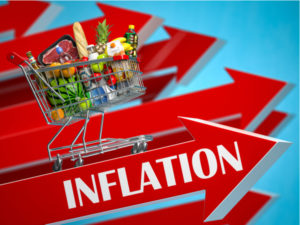Despite what the administration wants you to hear, the August inflation report was still pretty bad for American consumers. Prices went up, and not by a small number. Just because inflation was slower than July or June doesn’t change that it hurts American families. The Wall Street Journal’s editorial board discusses the report, writing:
We’re old enough to remember a time—earlier this year—when 5.3% consumer-price inflation was considered high. No longer. Nowadays when price rises hit that pace, as they did in August, everyone’s supposed to relax because that means inflation is moderating.
Only an economist or politician could try to define inflation down this way, and plenty will. The argument is that August’s price rise of 0.3% was a tad slower than the 0.5% in July and 0.9% in June. Core inflation, which excludes food and fuel that households actually buy, was more contained at 0.1% in August, or 4% at an annual rate from 4.3% in July. The Federal Reserve’s inflation target is 2%.
As long as you don’t look too hard, these data appear to vindicate those who argue this year’s inflation will prove transitory. Prices for travel-related services softened, suggesting consumers have burned through their pent-up vacation savings or are traveling less due to the Covid-19 Delta variant or both. Used-car prices also are easing. The other price increases are supposedly accounted for by the infamous “supply-chain bottlenecks” the economy is experiencing as the pandemic continues to disrupt global production of goods.
Pardon families if they doubt this because they don’t have the luxury of living on core items. Prices for food consumed at home rose 3% over the past year, and prices for proteins such as meat, fish and eggs have increased 8%. Gas and electricity price rises accelerated from July to August, and the government’s index for all energy items has increased 25% over the past year. Producer prices, which work their way into consumer prices, were up 8.3% in August from a year earlier.
And that’s only the inflation the government measures. One anomaly is that prices for shelter as captured by the inflation data (both rents and an estimate of the cost of owner-occupied housing) rose only 0.2% from July to August, and are up only 2.8% on the year.
Other measures suggest house prices have risen nearly 19% over the past year while rents have risen a bit more than 9%, as economist Mickey Levy notes. While economists haggle over how to account for housing in inflation data, families are struggling to pay rising rents and are priced out of starter homes.
Inflation is eroding the real wages of workers. On Tuesday the government reported that inflation-adjusted weekly earnings rose 0.3% in August for the first time all year. But real weekly earnings still fell 0.9% from August 2020 to August 2021. The Fed’s easy monetary policy lifts asset prices of the wealthy but erodes the purchasing power of average workers. Then the politicians tax and spend more in the name of reducing inequality.
All of this explains why inflation remains a potent political problem—and why Democrats would be wise to heed Sen. Joe Manchin’s plea for a strategic pause on new spending blowouts that the Fed is helping to finance with bond buying and low interest rates. Voters know how much they’re paying at the supermarket and gas pump.
Read more here.

